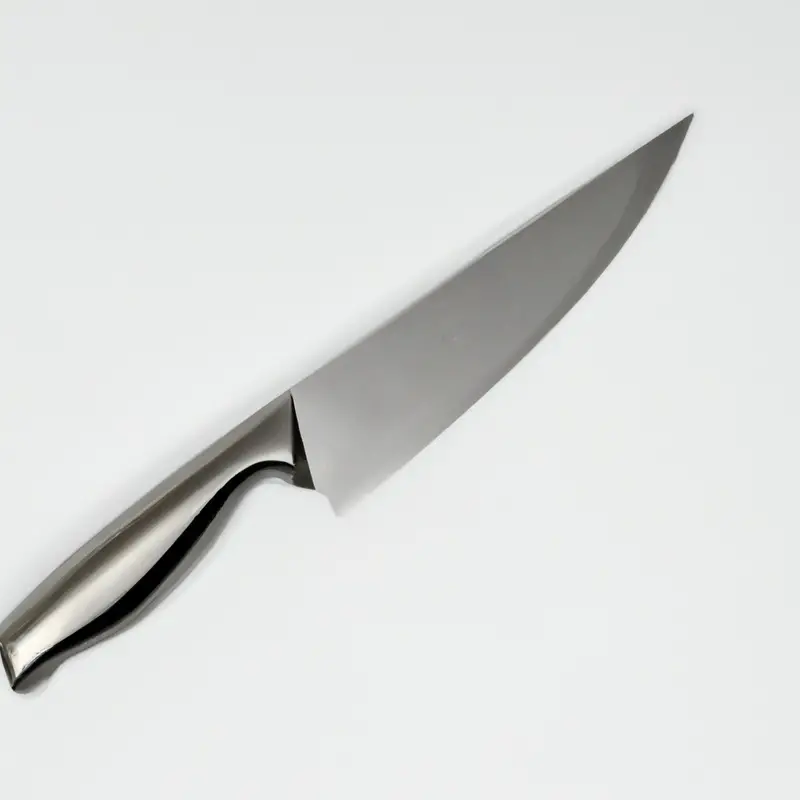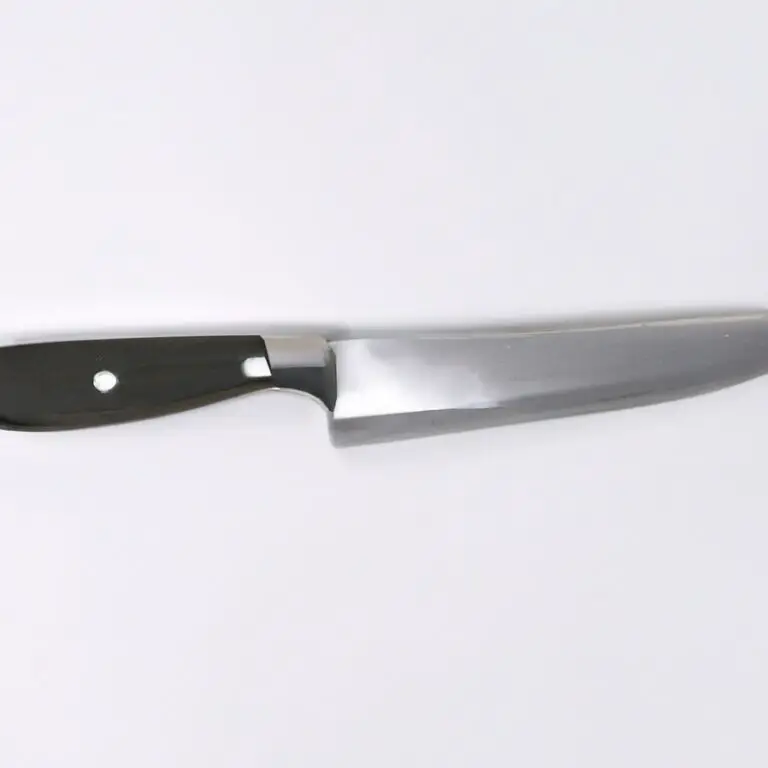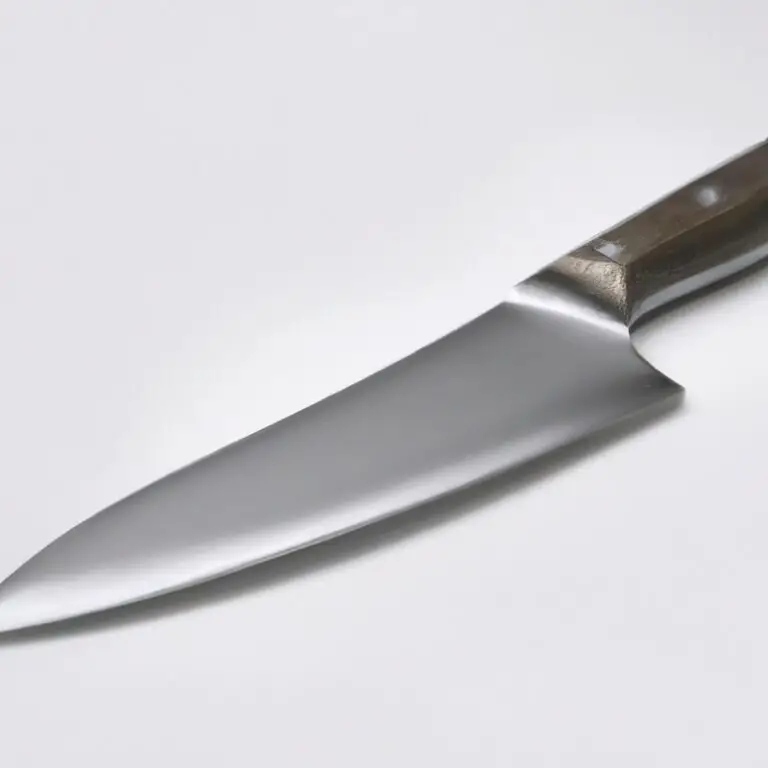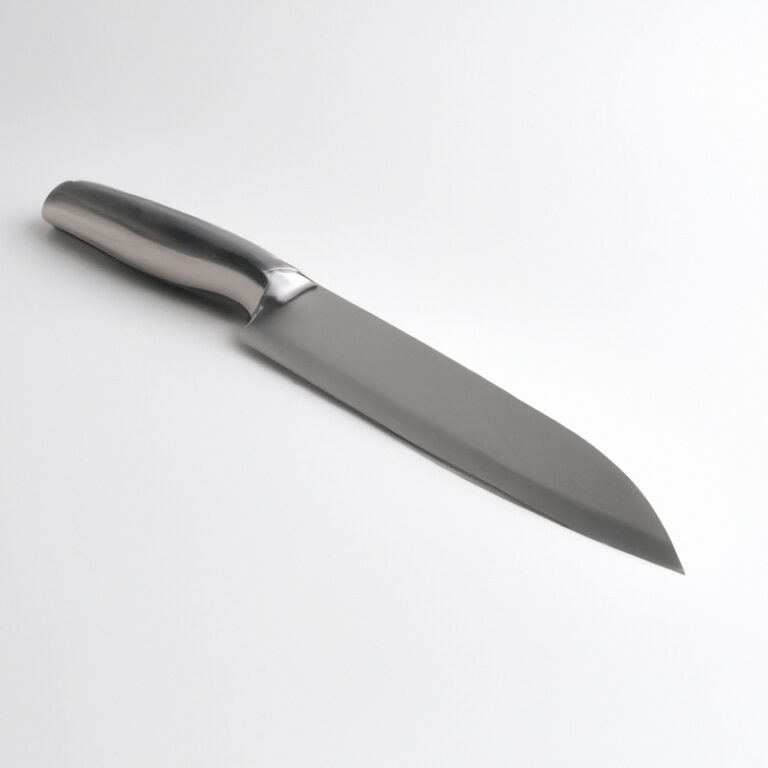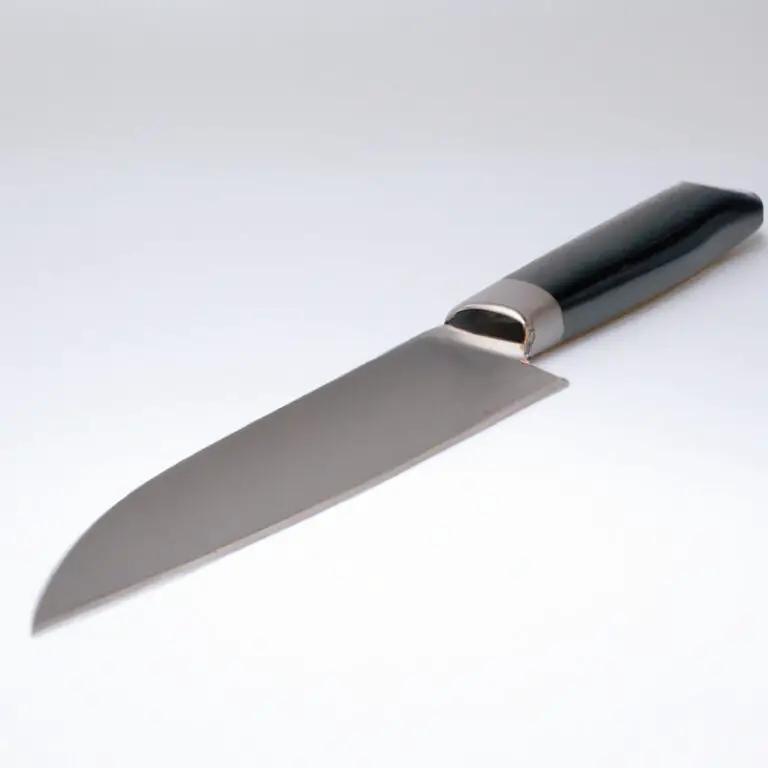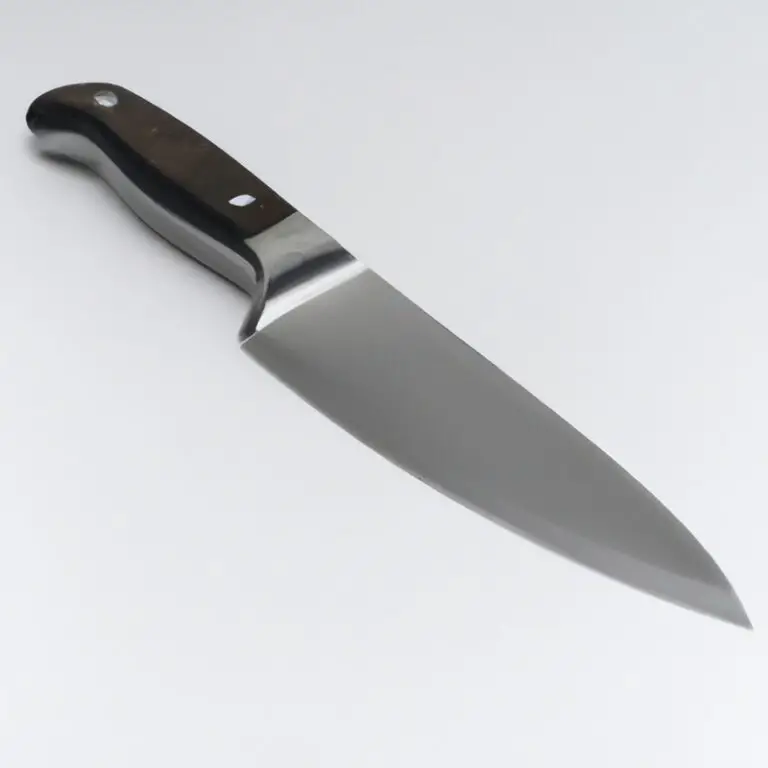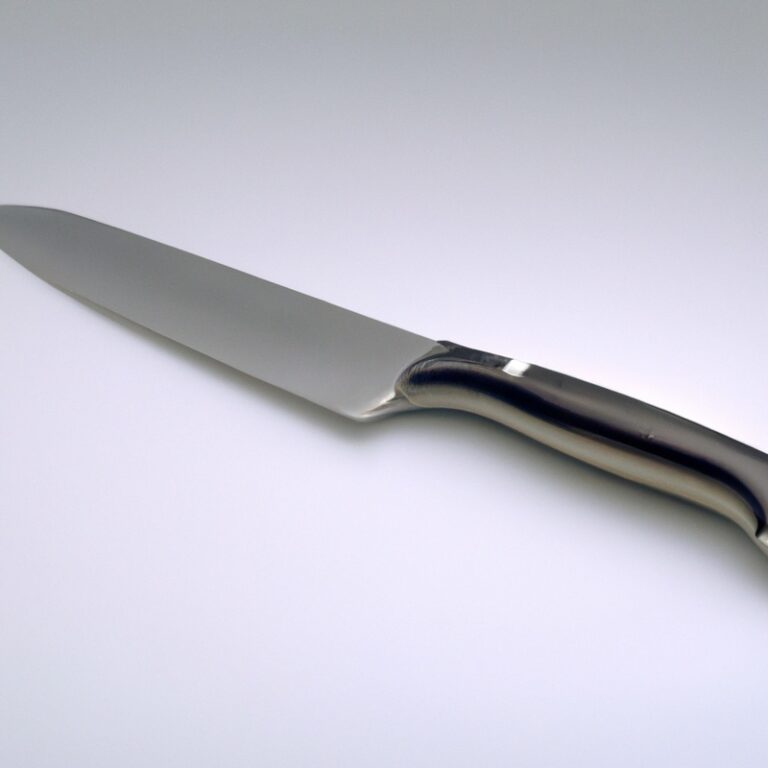What Are The Different Handle Materials Available For Paring Knives? Explained
Key Takeaways:
- Paring knives come in a variety of handle materials, including wood, plastic, metal, and composite materials.
- Each handle material offers different benefits, such as durability, comfort, and grip, making it important to consider personal preferences when choosing a paring knife.
- Wooden handles offer a traditional look and comfortable grip, but require more maintenance than other materials.
- Plastic and composite handles are more durable and dishwasher-safe, but may not provide the same level of grip and comfort as wood or metal options.
Have you ever wondered why some paring knives feel better in your hand than others? The secret lies in the handle material.
Whether you prefer a traditional, warm feel of wood or the modern, sleek appearance of metal, the handle material can make a significant difference in your cutting experience.
In this article, I will explore the different materials available for paring knife handles, from durable plastic to unique bone or horn, and how they impact the knife’s functionality and aesthetics. So, let’s dive in and find out which handle material is the best fit for your cooking needs.
| Handle Material | Pros | Cons |
|---|---|---|
| Wood | Grip is comfortable and warm, provides a natural feel, aesthetically pleasing | Requires maintenance such as oiling, can warp or crack if exposed to water for extended periods of time |
| Plastic | Economical and durable, easy to clean and maintain, resistant to moisture and chemicals | Less aesthetically pleasing than other materials, can be slippery when wet |
| Metal | Durable and long-lasting, easy to maintain and clean, heat-resistant | Can be heavy, slippery, and uncomfortable to grip for extended periods of time |
| Rubber | Excellent grip, slip-resistant, comfortable to hold, easy to clean | Less aesthetically pleasing than other materials, can have a strong rubber smell initially |
| Composite Materials | Durable and long-lasting, offers a variety of colors and textures, can simulate the look and feel of natural materials | May not provide the same tactile sensation as natural materials, can be more expensive |
Wood: Traditional and Warm Material
Wood is a classic and traditional material for knife handles, offering a warm and inviting feel to the grip. Different types of wood can be used for knife handles depending on the desired look and durability, including maple, walnut, oak, and more exotic options like rosewood and ebony.
Wooden handles can be polished and finished in various ways to enhance their appearance and provide better water resistance.
Wood is a great choice for those who value natural materials and appreciate the historical significance of this age-old material. However, wood does require more maintenance than some other materials, and care must be taken to avoid exposure to water and excessive heat that could damage the handle over time.
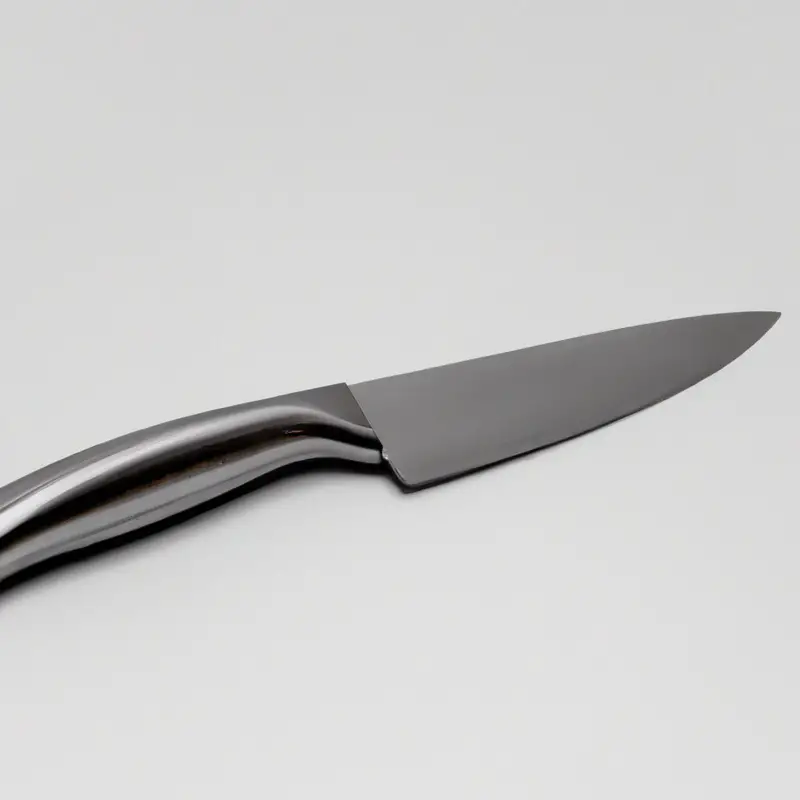
Plastic: Durable and Easy to Maintain
Plastic handles are widely used in paring knives due to their durability and ease of maintenance. They are highly resistant to chemicals and moisture, making them suitable for use in a kitchen environment where hygiene is essential.
Additionally, plastic handles come in an array of colors and designs, making them suitable for various applications, from home use to professional kitchens.
They are also more affordable than most handle materials, making them an excellent option for budget-conscious buyers. Moreover, plastic handles are lightweight, providing a comfortable and easy grip for extended periods of use.
However, some plastic handles may be prone to cracking or breakage if exposed to excessive heat or pressure.
Therefore, it is essential to purchase high-quality plastic-handled paring knives from reputable manufacturers to ensure their longevity and reliability. Overall, plastic handles offer an excellent combination of durability, affordability, and design versatility for paring knives.
Metal: Modern and Sleek Appearance
Metal is becoming increasingly popular for paring knife handles due to its modern and sleek appearance. Handles made from metal are usually made of stainless steel or aluminum, providing a smooth and shiny finish.
These materials are also durable and resistant to wear and tear, making them ideal for long-term use in the kitchen.
The weight of metal handles can vary depending on the specific material used, but they are generally heavier than plastic or composite handles, which some chefs may find preferable for the added stability. While metal handles may lack the warmth and natural feel of other materials like wood and bone, they offer a contemporary and elegant look that can complement any kitchen décor.
Given their resistance to abrasions and corrosion, metal handles require minimal upkeep, making them a practical choice for chefs who prioritize ease of maintenance.
In summary, metal handles on paring knives are gaining popularity, thanks to their modern and sleek appearance and their durability. While they may not provide the warmth and comfort of wood or bone handles, they offer a clean and elegant look that is perfect for contemporary kitchen spaces.
Composite: Versatile and Sturdy Handle
Composite materials offer a versatile and sturdy handle option for paring knives. They are a combination of different materials such as fiberglass, resin, and polymer, resulting in a handle that is both strong and resistant to wear and tear.
These handles are lightweight, ensuring an excellent balance for precision cutting and handling.
Composite handles are known for their durability, water resistance, and easy maintenance, making them ideal for everyday use. Additionally, they come in various colors and textures, thus providing a wide range of options to customize your chef’s knife.
Overall, a composite handle is an excellent choice for kitchen knives due to its excellent balance, durability, and aesthetic appeal.
Bone or Horn: Unique and Attractive Material
Bone or horn is a unique and attractive material that can create beautiful and functional handles for paring knives. It offers a natural aesthetic that can vary in color and pattern depending on the type of animal and cut used.
Bone and horn are durable and resistant to wear and tear, making them an excellent choice for knives that require frequent use.
They also provide a secure grip, which is important when handling sharp blades. However, it’s important to note that the use of bone or horn can be controversial, as some may object to the practice of harvesting animal parts for decorative purposes.
If this is a concern, there are alternatives available such as synthetic materials that mimic the look and feel of bone or horn.
Bone or horn offers a unique and attractive option for those looking for a natural, durable, and secure handle material for their paring knives. However, it’s important to consider personal values and ethical concerns before choosing this option.
Micarta: Sturdy and Resistant Material
Micarta is a composite material made of layers of paper, fabric, or other fibers that have been laminated together using a resin. It was originally developed as an electrical insulation material but has since found its way into many other applications, including knife handles.
Micarta is known for its durability and resistance to moisture, chemicals, and extreme temperatures.
It also has a non-slip surface, making it an ideal choice for knife handles, especially for those used in wet environments. Micarta comes in a variety of colors and textures, allowing for a range of aesthetic options.
Its sturdy and resistant properties make it a popular choice for outdoor and survival knives.
Overall, Micarta is a sturdy and reliable material for knife handles, and its durability and resistance to the elements make it a popular choice for those who need a knife that can withstand harsh conditions and heavy use.
G10: Lightweight and Strong Handle
G10 is a composite material made of fiberglass and resin that is commonly used in the production of knife handles. It is highly regarded for its lightweight and strength, making it ideal for heavy-duty uses.
The material is composed of many thin layers, making it easy to shape into various designs and patterns.
It’s available in various colors, making it an excellent choice for those who prefer custom-built knife handles. G10 has a texture that offers a superior grip, even when wet, ensuring the knife stays steady while performing chores.
Its low maintenance needs are another reason why users prefer G10 handles.
If you’re looking for a knife handle that’s lightweight, sturdy, highly customizable, offers an excellent grip, and requires minimal maintenance, then G10 is an optimal choice for you.
Carbon Fiber: High Tech and Stylish Handle
Carbon fiber is a popular material used in making high-end and stylish handles for paring knives. It is made of intertwined carbon fiber strands that have been infused with resin and molded into the desired shape.
This material is known for its lightweight, strength, and sleek appearance, making it a popular option among knife enthusiasts.
The unique weaving pattern of carbon fiber gives it a distinct look and modern appeal. Furthermore, carbon fiber has excellent resistance to impact, corrosion, and heat, making it a durable and long-lasting handle material.
It is also easy to clean and maintain, requiring only a quick wipe with a damp cloth to keep it looking new.
Carbon fiber is often used as an alternative to traditional materials like wood, bone, and horn due to its modern vibe and advanced performance. In summary, carbon fiber is a high-tech, sturdy, and stylish material that is increasingly popular in the knife industry.
Its unique look, lightweight design, and durability make it a great choice for paring knives that will last a lifetime.
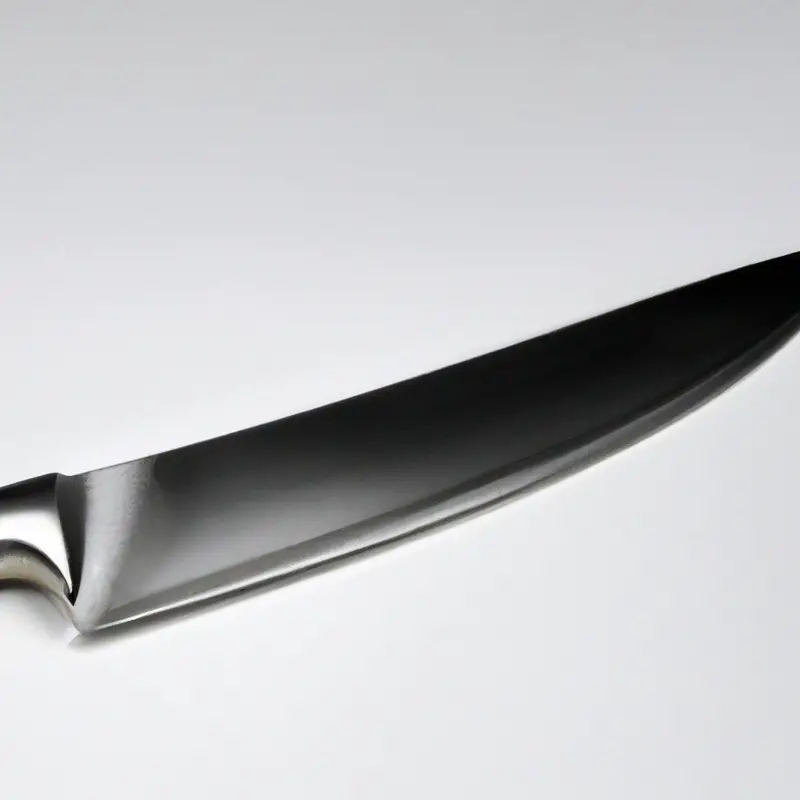
Rubber or Silicone: Firm and Comfortable Handle
Rubber and silicone handles are gaining popularity in paring knives due to their firm and comfortable grip. These materials offer a non-slip surface that allows you to maintain excellent control over the knife, making paring tasks more manageable and precise.
Rubber handles are known for their durability, shock-absorbing properties, and resistance to extreme temperatures and chemicals.
Additionally, rubber handles offer a comfortable grip that reduces hand fatigue and increases productivity. However, rubber handles may become slippery when wet, requiring you to dry them for optimal handling.
On the other hand, silicone handles are heat-resistant, non-toxic, and dishwasher safe.
Furthermore, they are known for their excellent grip, which increases precision and safety during use. Silicone handles may also be available in a wide range of colors, making them perfect for adding a pop of color to your kitchen.
Ultimately, whether you choose a rubber or silicone handle for your paring knife will depend on your personal preferences and needs.
However, both options provide a firm and comfortable grip that can make your paring tasks more manageable and enjoyable.
Resin: Colorful and Eye-catching Handle
Resin handles are becoming an increasingly popular choice for paring knives due to their eye-catching designs and versatility. Resin can be colored in virtually any hue, making it ideal for those seeking a knife with a unique aesthetic.
Furthermore, resin is a highly durable material that can withstand regular use and is easy to maintain.
It is also resistant to moisture and does not warp or crack over time. Another benefit of resin handles is their grip and comfort.
They offer a firm grip and are comfortable to hold, even for extended periods of time.
Overall, resin handles are an excellent choice for those seeking a paring knife with a colorful and unique appearance, as well as a comfortable and durable handle.
Final Verdict
The choice of handle material for your paring knife largely depends on personal preference, budget, and intended usage. Knowing the advantages and disadvantages of each material can help you make an informed decision when selecting a paring knife that will not only meet your needs but also last for years to come.
Whether you prefer the warm feel of wood or the sleek appearance of metal, there is a material to suit your style.
Just remember that the most important consideration is the quality and durability of the handle material. With this guide, you can confidently choose the handle material that best suits your needs and enjoy the ease and comfort of using a well-crafted paring knife.

